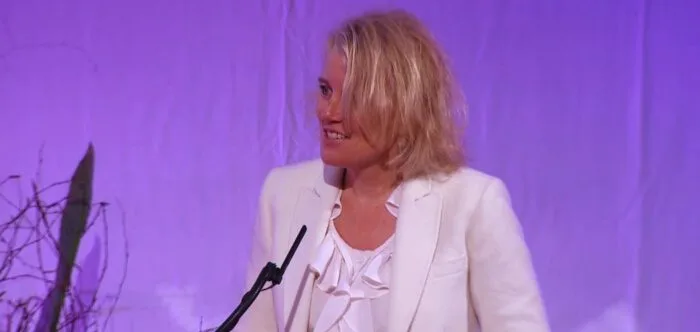National conferences offer a prestigious platform for professionals to share knowledge, network, and collaborate on a wide range of topics. These events attract a diverse audience, ranging from industry experts to budding professionals, all eager to learn and engage. But, how can I give my presentation at a national conference?
It starts with thorough preparation and tailoring your content to resonate with your audience. Practicing your delivery, employing engaging visuals, and preparing for audience questions are also key.
Arriving early to familiarize yourself with the venue and its technology, and networking with attendees for feedback, can significantly enhance your presentation’s impact. Keep reading for more in-depth advice on making a lasting impression at your next national conference.
A General Overview of the National Conference
National conferences are hubs of innovation and knowledge sharing, attracting a diverse array of professionals from various fields. These events serve as a platform for presenting research, discussing industry trends, and networking with peers. Attendees gain invaluable insights, making these conferences essential for professional growth.
Hosting a variety of speakers, workshops, and panel discussions, these conferences offer a rich learning experience. They are meticulously organized to cater to a wide range of interests and specialties within a field. This diversity in content ensures that every participant finds sessions that are both informative and engaging.
The opportunity to network at these conferences is unparalleled. Participants connect with industry leaders, potential collaborators, and peers from across the nation. Such interactions often lead to fruitful collaborations, new projects, and expanded professional networks.
Significance of Presenting at a National Conference
Delivering a presentation at a national conference is a prestigious achievement, offering unique benefits for personal and professional development. It’s an opportunity to showcase your work to a broader audience and gain valuable feedback. Here are some key reasons why presenting at such events is significant:
- National conferences bring together diverse professionals, providing a stage to share your ideas and research with industry experts. This exposure can lead to new perspectives, enhancing the quality and impact of your work.
- It’s a chance to hone your public speaking and presentation skills in a professional setting. Excelling in these skills can boost your confidence and open doors to further speaking opportunities.
- Presenting at these events positions you as a thought leader in your field. It builds your professional reputation and can lead to invitations for collaborations or further speaking engagements.
- Networking opportunities abound at national conferences, often leading to valuable connections. These interactions can spark new ideas, partnerships, and career advancements.
- Engaging with the latest advancements in your field is another benefit. Conferences often showcase cutting-edge research and trends, providing presenters with fresh insights and knowledge.
How Can I Give My Presentation at a National Conference?
Presenting at a national conference is an excellent opportunity to showcase your expertise and insights. It’s a platform where professionals from various fields come together to learn and exchange ideas. To make your presentation a success, follow these seven key steps:

Step 1: Know Your Audience
Start by researching the demographics and professional backgrounds of your audience. Tailoring your content to their interests and expertise level makes your presentation more relevant and engaging. This step is crucial for making a meaningful connection with your listeners.
Step 2: Develop a Clear Message
Identify the core message of your presentation and build your content around it. Keep it focused and straightforward to maintain audience engagement. A clear, well-structured message helps in effectively communicating your ideas and ensures your audience takes away the intended knowledge.
Step 3: Create Engaging Visuals
Design visuals that are both informative and captivating. Utilize graphs, images, and infographics to break down complex information. Good visuals can significantly enhance the understanding of your topic, making your presentation more effective.
Step 4: Practice Your Delivery
Repeated practice helps in refining your delivery style. Focus on modulating your voice, making eye contact, and using gestures for emphasis. A well-practiced delivery makes your presentation more dynamic and keeps the audience interested.
Step 5: Prepare for Questions
Think of potential questions and prepare concise, informative answers. This not only showcases your expertise but also encourages interactive dialogue with your audience. Being well-prepared for a Q&A session can greatly enhance the overall impact of your presentation.
Step 6: Check Technical Requirements
Before the presentation, verify all technical aspects like projectors, microphones, and Wi-Fi connectivity. Ensure compatibility of your presentation with the provided hardware and software. Being prepared technically prevents last-minute hiccups and ensures a smooth presentation.
Step 7: Network and Gather Feedback
After your presentation, engage with the audience and fellow speakers. Networking helps in building professional relationships and opens doors for future opportunities. Gathering feedback also provides insights into areas for improvement and new perspectives on your topic.
Remember, a successful presentation at a national conference can significantly enhance your professional standing. It’s an opportunity to impress your peers and make meaningful connections in your field.
Conference Presentation – How Does it Benefit You?
Giving a conference presentation is more than just sharing your work; it’s an essential component of professional development. It offers unique opportunities for growth, recognition, and networking. Understanding the multifaceted benefits can motivate you to seize such opportunities.
Enhanced Visibility in Your Field
A conference presentation puts your name and work in front of a specialized audience. It’s an effective way to get noticed by peers, industry leaders, and potential collaborators. This visibility can lead to recognition as an expert in your field. It’s an invaluable step towards establishing a strong professional presence.
Networking Opportunities
Conferences are melting pots of professionals from diverse backgrounds. Presenting your work opens doors to engaging with peers, mentors, and industry leaders. These connections can lead to collaborations, job opportunities, and valuable exchanges of ideas. Networking at these events often results in lasting professional relationships.
Feedback and Insight
Presenting at a conference exposes your work to external scrutiny and constructive feedback. This feedback is crucial for refining your ideas and research. It offers fresh perspectives that might not have been considered otherwise. Receiving input from a varied audience enriches your understanding and approach.
Skill Development
Delivering a presentation hones crucial skills like public speaking, communication, and the ability to convey complex information clearly. These skills are transferable and beneficial in any professional setting. Regularly presenting at conferences can significantly improve your confidence and ability to engage an audience. It’s a practical way to develop and showcase your communication and presentation skills.
Staying Updated with Trends
Conferences are often where the latest developments and research in a field are first introduced. By presenting, you immerse yourself in these new trends and innovations. This exposure keeps you updated and can inspire new directions in your work. It’s a dynamic way to stay connected with the cutting edge of your field.
Common Mistakes You Can Do While Presenting at a National Conference
Presenting at a national conference is an exciting yet challenging endeavor. It’s an opportunity to showcase your expertise, but certain pitfalls can undermine your efforts. Being aware of common mistakes can help you avoid them.
- Overloading Slides with Text: Cramming too much text onto slides can overwhelm and disengage your audience. It makes it hard for them to follow along.
- Failing to Engage the Audience: Merely reading from your slides without interacting can lead to a disinterested audience. Engagement is key to keeping their attention.
- Ignoring Time Constraints: Exceeding your allotted time shows a lack of preparation and respect for the schedule. It can inconvenience other speakers and the audience.
- Underestimating the Importance of Rehearsal: Insufficient practice can result in a disjointed and unconfident delivery. Familiarity with your content is crucial for a smooth presentation.
- Neglecting Technical Preparation: Not checking compatibility with the venue’s technical setup can lead to last-minute issues. Technical glitches can disrupt the flow of your presentation.
- Using Jargon Without Explanation: Overusing technical terms or jargon without clarification can confuse attendees unfamiliar with the terminology. It can make your presentation less accessible.
Essential Tips to Avoid Conference Presentation Mistakes
Delivering a presentation at a national conference is an art that requires careful planning and execution. It’s a platform where your ideas can shine, but only if you manage common pitfalls. To help you make the most of this opportunity, here are essential tips to guide you in avoiding typical presentation mistakes.
Simplify Your Slides
To avoid overwhelming your audience, keep your slides clean and straightforward. Use bullet points, large fonts, and minimal text to convey your message effectively. Visuals should aid your presentation, not clutter it. Remember, slides are a tool for emphasis, not a script.
Engage Your Audience
Keep your audience interested by making your presentation interactive. Ask questions, use examples they can relate to, and maintain eye contact. It’s about creating a conversation, not delivering a monologue. Engaging presentations are remembered long after they’ve concluded.
Time Management
Practice and time your presentation to respect the allocated slot. Being concise shows professionalism and consideration for other speakers and attendees. Sticking to your time limit also ensures you cover all key points without rushing. Good time management reflects well on you and your content.
Rehearse Thoroughly
Practice is essential for a confident and polished delivery. Rehearse in front of peers or record yourself to refine your speaking style. Familiarity with your content will reduce reliance on notes and boost your confidence. A well-rehearsed presentation flows smoothly and captivates the audience.
Technical Preparation
Check the technical aspects in advance. Ensure your presentation format is compatible with the equipment at the venue. Testing beforehand prevents technical glitches that could disrupt your session. A smooth technical execution keeps the focus on your message, not on mishaps.
Clarify Jargon
If your topic requires jargon, explain it clearly. Ensure your presentation is accessible to all audience levels. Breaking down complex terms makes your presentation inclusive and understandable. It’s about communicating effectively, not showcasing technical vocabulary.
Bottom Line
In terms of professional growth, delivering a presentation at a national conference is a significant milestone. It offers a unique platform for knowledge exchange, networking, and showcasing your expertise to a diverse audience.
The key to mastering this opportunity lies in addressing the question, how can I give my presentation at a national conference? This involves thorough preparation, understanding your audience, and ensuring your content is engaging and well-structured. Effective visuals and confident delivery further enhance the impact of your presentation.
Avoiding common pitfalls, such as overloading slides with text or failing to engage the audience, is crucial. By embracing these strategies, your conference presentation not only conveys your message effectively but also opens doors to new professional opportunities and collaborations.






